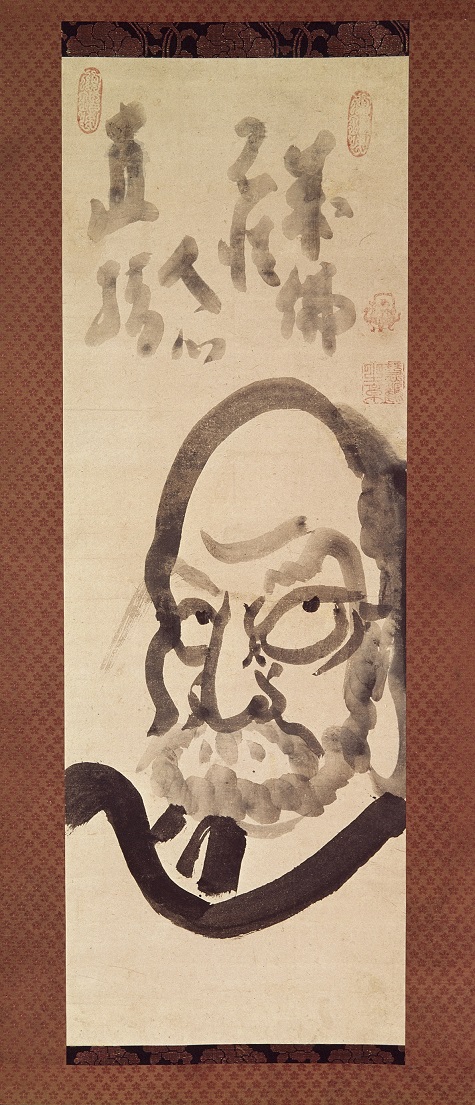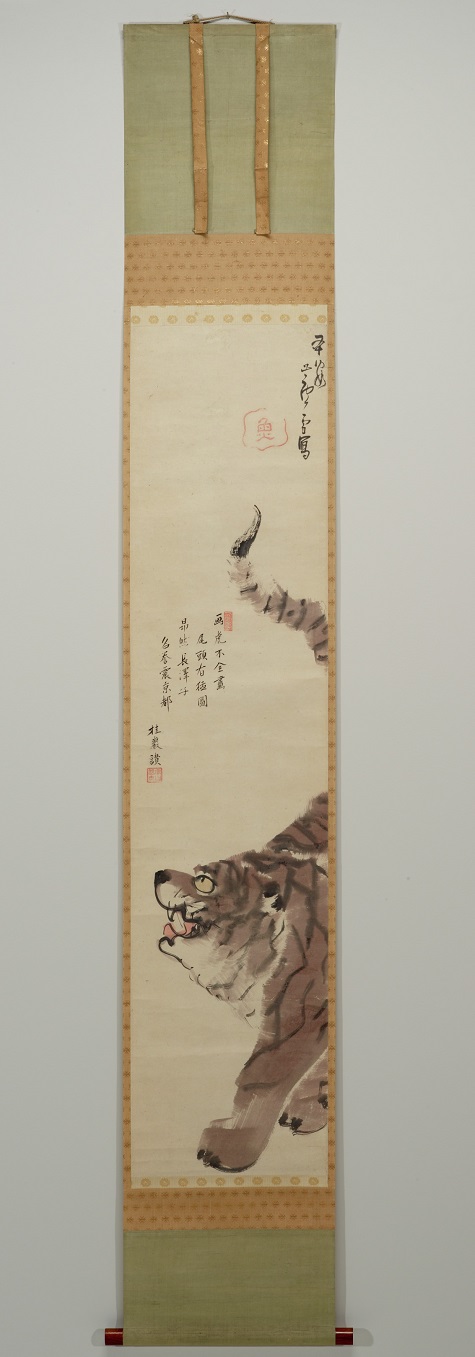The DMA’s Asian Collection features many works of art that express the Japanese Zen Buddhist tradition. Essentially, Zen art seeks to express the True or Formless Self, a form of being that is prior to and free from any physical form. In order to channel one’s True Self, the creative act must be conducted in a state beyond thinking. In other words, the pinnacle of artistic achievement results from an act of creation made with no inhibitions or restraint in a flow of consciousness.

Hakuin Ekaku, Daruma, Edo, n.d., ink on paper, Dallas Museum of Art, General Acquisitions Fund 1972.1
A few works that demonstrate this most purely include the Daruma Scroll (c. 1603-1868) by the Zen priest Hakuin Ekaku and the Tiger Scroll (c. 1603-1868) by Nagasawa Rosetsu.

Nagasawa Rosetsu, Tiger, Edo, after 1792, ink and color on paper, Dallas Museum of Art, General Acquisitions Fund 1972.13
Daruma is the Buddhist monk that transmitted Chan Buddhism to China from where it was then transferred to Japan and became its own distinct phenomenon known as Zen. The inscription on the Tiger scroll indicates that the artist was able to express the essential nature, the pure essence of “tiger.” Notice that in both works, the outlines of the images are loosely defined, suggesting that the boundaries of the forms are permeable and in a state of flux. Indeed, both works appear as if done in a rush, which reflects the Zen ideal that the creative act must be a reflection of the Formless Self, something only attainable in a state of non-thinking.
Another concern at play in these scrolls is the display of rugged masculinity and strength. For instance, the tiger, an animal not indigenous to Japan, was appropriated from Chinese mythology due to its association with power and military might. Daruma appears ruggedly knowledgeable with his unkempt beard and wrinkled forehead. These characteristics contrast with more traditional forms of Buddhism, in which holy figures were generally depicted with pristine, youthful appearances and perfectly symmetrical faces. The emphasis on masculine characteristics and the association of age with holiness reinforced the patriarchal structures responsible for maintaining the feudal system in Japan.
Meditate on these works and more that capture Zen Buddhism in the DMA’s free collection galleries.
Devon Hersch is the McDermott Intern for Asian Art at the DMA